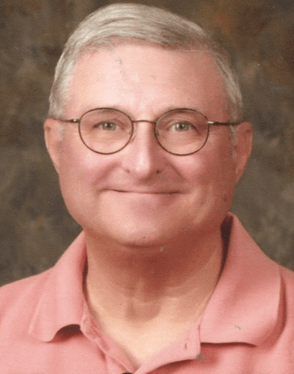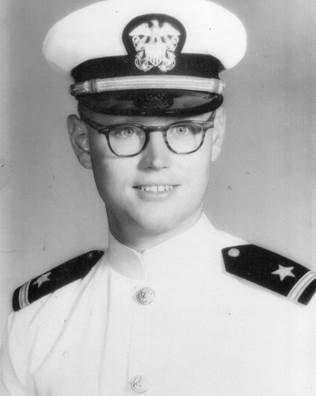RWC residents made life and death decisions in U.S. Armed Forces

Major James Makin
As the logistics analyst for the Army Chief of Staff, Major James Makin was advising very senior military officers – three and four-star generals to be exact. In this role, he would give his honest appraisal of a situation, and they would run with it. When they needed more information, they’d say, “Walk with me,” Makin said. “Sometimes this meant walking with them to a meeting on Capitol Hill and providing more information. Sometimes, they’d say, ‘Drive with me.’ I knew I was in for a trip when they said, ‘Fly with me.’”
Makin, retired US Army, Infantry, Ordnance (Maintenance), Operations Research, is just one of 60 RWC residents who served in the military and whose photos and stories will be displayed as part of RWC’s Veterans Wall of Honor exhibit, held each November in RWC’s Gallery Hall. Collectively, these vets gave 659 years of service to their country. The exhibition is open to the community throughout November.
Serving in the military for 20 years, Makin spent his last five years of service at the Pentagon where he said he worked around the clock. “Sometimes days would disappear; sometimes weeks would go by…” he said. “But you never had to worry about whether you were making an impact.”
Makin received two Legions of Merit awards – the 6th highest combat award you can get. “Some might say I just received the Legion of Merit because retired from the Chief of Staff of the Army’s office, but I received two of them,” Makin pointed out.
Desert Storm was going on while he was at the Pentagon. Makin’s job was drawing down the size of the Army, and cost cutting in the building. “Sometimes we would break the fun meter as it goes down and hits zero,” he deadpanned.
“I ended up getting a master’s in operations research, which is Applied Mathematics. I would dissect any area and apply analytical techniques, and a host of different skills to re-engineer operations,” he said. “I learned to tear things apart and put them together again efficiently and with the least amount of resources – restructuring multiple billions of dollars.”
He and his wife, Barbara (who worked at Exxon Mobile) retired at the same time and moved to White Stone.
“Being in the military, you learn to size things up,” he said. “You look for hospitals, emergency services, a good hardware store and in this case, a West Marine.”
After living in a house on the water in White Stone for nearly 25 years, he and Barbara finally landed at RWC in March 2024.
“It was the most seamless progression in our life,” Makin said. “In the military, we moved 19 times in 20 years, but we had two young, scrappy boys at the time. “This would have been a miserable move for us had it not been for all the help from RWC.”

Lt. (JG) Richard T. Wilson III
Another veteran, Lt. (JG) Richard T. Wilson III, served in the US Navy, Operations and CIC Communications. He was commissioned in Newport, RI on Nov. 22, 1963. That date may ring a bell.
“I was commissioned the day John F. Kennedy was assassinated,” Wilson said. “We heard the news as we crossed the ferry headed home. We listened to funeral organ music for five hours all the way back to Richmond.”
With three years on active duty, Wilson served on a high-speed transport ship – the USS Ruchamkin (APD-89) and made a combat landing in Dominican Republic in 1965.
“I was the Officer of the Deck responsible for all lives,” Wilson recalled. “If I made a mistake, it was going to be fatal.”
With primary control of the vessel for amphibious landings, Wilson took 1,500 combat Marines ashore to keep the lid on unrest in the Caribbean when notorious dictators François Duvalier (Papa Doc) and his son, Baby Doc, were in power. Many people – mostly civilians lost their lives in the crossfire.
When not out at sea, Wilson enjoyed a robust social life. He and his fellow Navy officers were stationed at Little Creek, VA and rented a duplex from a retired three-star admiral. It was just “a hop, skip and jump away” from Virginia Beach and parties were frequent, according to Wilson.
“There were about 500 men stationed in the area and there were about 1,000 female teachers, so everyone was looking for a nice person to be with,” he said.
One night, he was standing at a bar and a man came up to him and said, “Mr. Wilson, I want to thank you for saving my life. A Seaman first class was harassing me all the time and had me up against the bulkhead when you happened by. You said, ‘Does there seem to be a problem here?’ He said, ‘No sir. No sir.’ He never touched me again. So, you saved my life.”
Wilson later joined the Supporting Arms Evaluator as a range safety officer teaching Naval gunfire support and qualifying destroyers to depart for Vietnam to support U.S. troops.
Wilson met his wife, Marty, at a mutual friend’s wedding. After retiring, they moved to a 10-acre farm in Foxwells – about five miles from White Stone. They celebrated their 59th anniversary on Oct. 23. They moved to Rappahannock Westminster-Canterbury four years ago.
“RWC was always our objective,” he said. “Because of the independent living, assisted living and health care, I knew this was the place to come. After settling in here, we found that four of my arteries were 70% blocked, but after open heart surgery and with therapy, I earned my way out of health care and was able to come back to the cottage with Marty.”
“I’ve been to most of the Westminster Canterburys in the state,” Wilson said. “RWC is by far, my favorite. There are 250 people here. There are 900 at Westminster Canterbury Richmond and they are adding 300 more. If you want to take a walk there, you are just walking on parking lots. We have a very active athletic program at RWC and lots of outdoor space to walk. It’s designed to keep us safe and active.”
